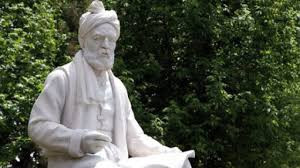
Each year on Ordibehesht 25, which aligns with May 15, the global community pauses to honor the Great Poet Ferdowsi, the monumental Persian poet celebrated for his epic masterpiece, Shahnameh. This national commemoration day shines a spotlight on a figure revered as a guardian of the Persian language, an ancient tongue that has for centuries served as a vibrant conduit of culture and understanding for millions across the globe.
The enduring legacy of the Persian language extends far beyond everyday communication; it is a treasure trove of literary brilliance. Spoken by millions and holding a notable presence online, ranking as the 10th most used language on websites globally, its true depth lies in its rich artistic heritage. For over two millennia, Persian has nurtured an extraordinary collection of magnificent poems, captivating narratives, and profound philosophical works, solidifying its place as a cornerstone of world literature.
Abul-Qasem Ferdowsi Tusi (940 – 1020Ad) was born in Tus in Khorasan which is situated in today's Razavi Khorasan province in Iran. Little is known about Ferdowsi's early life.
According to some data, Ferdowsi was a landowner, deriving a comfortable income from his estates. These were landowning Iranian aristocrats who had flourished under the Sassanid dynasty. Ferdowsi grew up in Tus, a city under the control of one of these dynasties, the Samanids, who claimed descent from the Sassanid general Bahram Chobin (whose story Ferdowsi recounts in one of the later sections of the Shahnameh).
Ferdowsi's Shahnameh ('The Book of Kings') is the most popular and influential national epic in Iran and other Persian-speaking nations. The Shahnameh is the only surviving work by Ferdowsi regarded as indisputably genuine.
Ferdowsi started writing the Shahnameh in 977 AD and completed it on 8 March 1010. He spent over three decades writing the Shahnameh.
It is the national epic of the Iranian people that describes the history of Persia from ancient times until the Islamic conquest in the 7th century. The Shahnameh is an epic poem of over 50,000 couplets, written in early Modern Persian. The Shahnameh is a sprawling epic poem, a literary masterpiece that tells the story of Persia, or Iran, from the very creation of the world all the way up to the 7th century AD. It registers the rise and fall of dynasties, the triumphs and tragedies of heroes, and the enduring spirit of the Iranian people. But Shahnameh’s significance transcends its historical and literary values. It also, offers valuable lessons that resonate with the concepts of jus ad bellum (law on the use of force which is enshrined in UN Charter in 1945) and jus in bello (law of war which is enshrined in Geneva Conventions in 1949).
The result of his work is the world’s longest epic poem written by a single author; it is three times as long as Homer’s Iliad and Odyssey combined. The book about the Persian kings, written entirely in Persian, played a key role in the revival of this language and made a significant contribution to the development of Persian literature.
The romance of Zal and Rudaba, the Seven Labors of Rostam, Rostam and Sohrab, Siavash, and Sudaba, the romance of Bizhan and Manizheh and Rostam and Esfandyar are among the most popular Shahnameh stories.
Ferdowsi is one of the undisputed giants of Persian literature. After Ferdowsi's Shahnameh, a number of other works similar in nature surfaced over the centuries within the cultural sphere of the Persian language. Without exception, all such works were based on the style and method of Ferdowsi's Shahnameh, but none of them could quite achieve the same degree of fame and popularity as Ferdowsi's masterpiece.
Ferdowsi has a unique place in Persian history because of the strides he made in reviving and regenerating the Persian language and cultural traditions. His works are cited as a crucial component in the persistence of the Persian language, as those works allowed much of the tongue to remain codified and intact. Many modern Iranians see him as the father of the modern Persian language.
The Persians regard Ferdowsi as the greatest of their poets. For nearly a thousand years they have continued to read and listen to recitations from his masterwork, the Shahnameh, in which the Persian national epic found its final and enduring form.
Ferdowsi died in 1020 AD in the Tus in the same city in which he was born. Ferdowsi was buried in his own garden. A Ghaznavid governor of Khorasan constructed a mausoleum over the grave and it became a revered site. The Tomb of Ferdowsi, which resembles the tomb of Cyrus the Great, is built in the style of Achaemenid architecture. It is a tomb complex composed of a white marble base, and a decorative edifice erected.
Today, Ferdowsi's tomb is one of the tourist attractions in Iran. Millions of visitors from various provinces of Iran come to see the tomb every year. Foreign dignitaries, tourists, and other Persian-speaking people from Europe, Asia, and the Middle East also visit the site. The site has also inspired many Persian poets including Iranian poet Mehdi Akhavan-Sales who is actually physically buried not far from the tomb of Ferdowsi, in his own tomb on the grounds of Ferdowsi's complex.
Today is the National Commemoration Day of the great Iranian epic poet Ferdowsi. Every year, a number of literati and scholars from around the world gather on May 15 to commemorate the Great Persian Poet.







